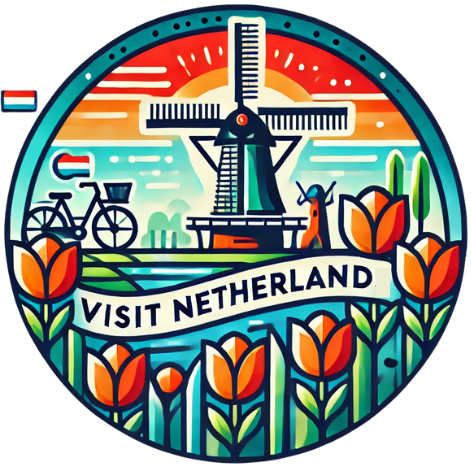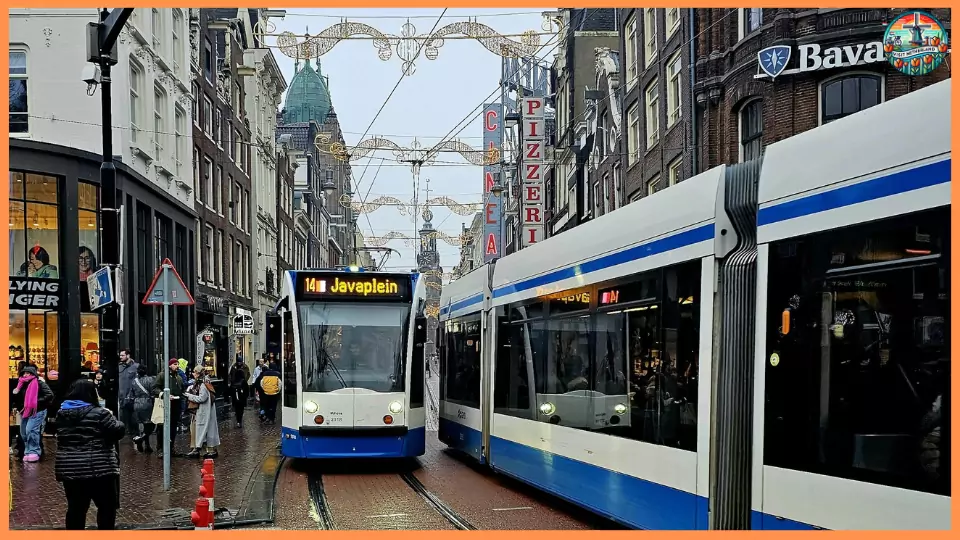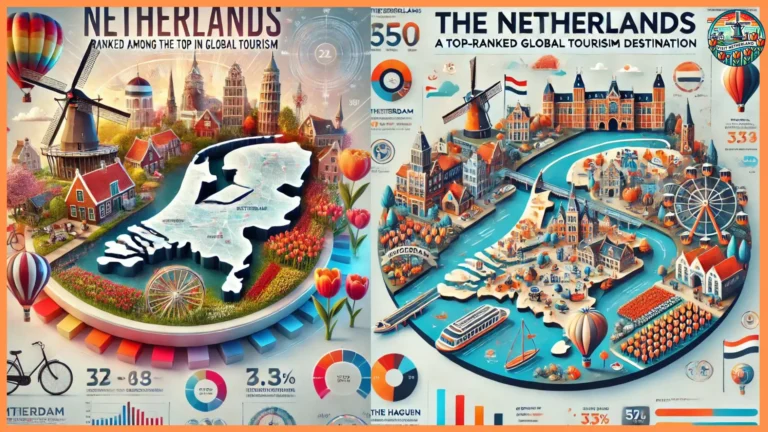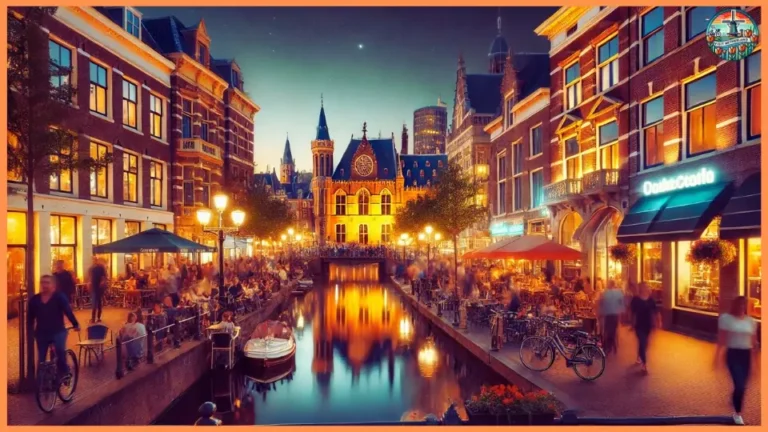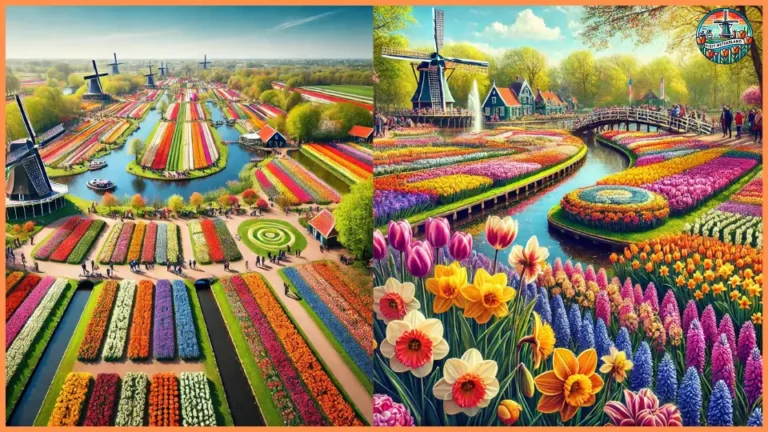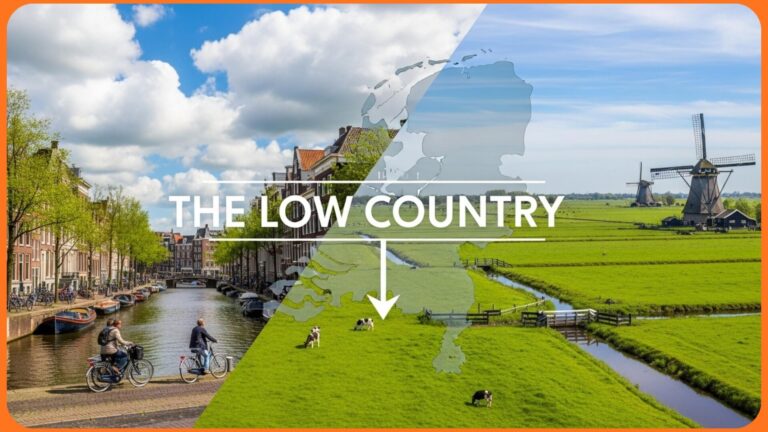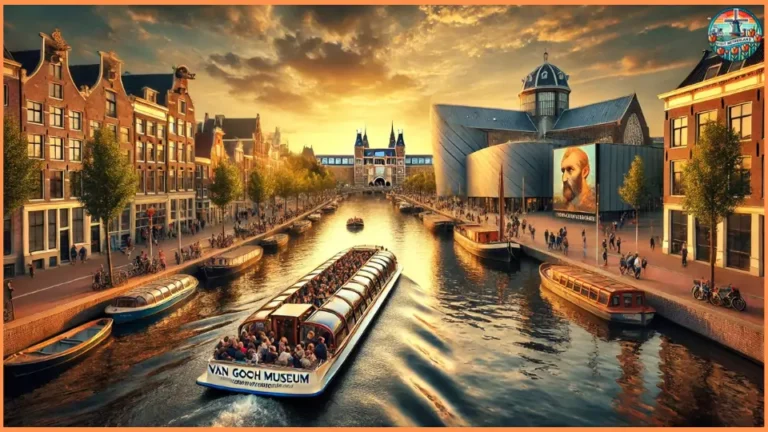The Best Ways to Travel Around the Netherlands
The Netherlands is famous for its picturesque landscapes, vibrant cities, and rich cultural history; it has a variety of ways through which one might go about discovering its diverse regions. Be it touring the canals of Amsterdam, cycling around tulip fields, or going on a journey to discover enchanting medieval towns, the country is well-endowed with varieties of transport modes to suit every kind of traveler’s needs. In this guide, we’ll explore the best ways to travel around the Netherlands, considering convenience, cost, environmental impact, and the overall experience.
1. Cycling: The Ultimate Dutch Experience
The Netherlands is a cycling haven, often regarded as one of the most bike-friendly countries in the world. With flat terrain, dedicated bike lanes, and a strong cycling culture, cycling is undoubtedly one of the best ways to explore the country.
Why Cycle?
- Wide Availability of Bikes: Most cities and towns offer bike rental shops and bike-sharing schemes. Depending on your itinerary, you can rent a bike for a few hours or for several days.
- Scenic Routes: The Netherlands is dotted with picturesque routes, such as the famous “Fietsknooppunten” network, where numbered cycling junctions guide you through rural landscapes, coastal areas, and quaint villages.
- Accessibility: Cycling is a great way to explore both urban and rural areas. In cities like Amsterdam, Rotterdam, and Utrecht, cycling is not only practical but also efficient in navigating through narrow streets and avoiding traffic congestion.
Tips for Cycling in the Netherlands
- Stay Safe: Although cycling is relatively safe, always be mindful of traffic rules. Cyclists have their own lanes, but you still need to pay attention to cars, trams, and pedestrians.
- Weather Preparedness: The weather can be unpredictable. Pack a raincoat or poncho, especially in the autumn and winter months.
- Bike Rentals: Many train stations offer bike rental services, which is an excellent option if you’re traveling between cities. You can also use bike-sharing apps such as OV-fiets for easy rentals.
2. Train Travel: Fast, Efficient, and Comfortable
The Dutch railway system is one of the most efficient and well-connected in Europe. Trains are the preferred mode of transport for longer journeys, connecting all major cities and towns across the country.
Why Take the Train?
- Extensive Network: The Netherlands has an extensive rail network that connects not only major cities like Amsterdam, Rotterdam, and The Hague but also smaller towns and even neighboring countries like Belgium and Germany.
- Speed and Comfort: Trains are fast, and comfortable, and offer amenities like Wi-Fi, food, and drinks. Traveling by train is also more relaxing than driving, as you can enjoy the scenery without the stress of navigation.
- Punctuality: Dutch trains are known for their punctuality. They generally run on time and have frequent departures during peak hours, making them a reliable mode of transport.
Train Travel Tips
- Dutch Rail Cards: If you’re planning to travel extensively by train, consider purchasing a rail card. The NS (Dutch Railways) offers several discount cards for tourists, such as the “NS Day Ticket” or “NS Group Ticket,” which can save you money on long-distance travel.
- Booking Tickets: Tickets can be purchased online, at vending machines, or at train stations. Make sure to check the train schedules in advance, as they can vary depending on the time of day.
3. Public Transport: Buses and Trams
In cities, buses and trams are an excellent choice for short-distance travel. They are convenient, affordable, and complement the train system when you need to reach destinations that are not easily accessible by train.
Why Use Public Transport?
- Urban Mobility: Public transport in cities like Amsterdam, Rotterdam, and Utrecht is frequent and reliable, and it’s a great way to get around if you’re exploring urban areas.
- Affordability: A single journey on a bus or tram is usually inexpensive. You can buy tickets from the driver or use contactless payment options like the OV-chipkaart, which works across all forms of public transport in the country.
- Eco-Friendly: Public transport is a greener alternative to driving a car, especially in busy urban areas.
Public Transport Tips
- OV-chipkaart: This smart card system allows you to easily check in and out of buses, trams, and trains. It’s the most convenient way to pay for travel, especially if you plan on using public transport frequently.
- Timetable: Buses and trams have fixed schedules, but during peak hours, they tend to run more frequently. Make sure to check the schedules via apps or station timetables.
- Night Transport: Many cities offer night buses or trams, particularly on weekends, so getting around at night is still possible.
4. Car Rental: Flexibility for Remote Areas
While the Netherlands excels in public transport and cycling infrastructure, there are certain regions where renting a car might offer more flexibility, particularly if you’re planning to explore remote or rural areas like the Wadden Islands, the countryside in Friesland, or the Hoge Veluwe National Park.
Why Rent a Car?
- Access to Remote Locations: If you plan to visit places outside the major cities or explore rural regions, having a car provides flexibility. It allows you to stop at picturesque spots along the way and gives you more control over your itinerary.
- Comfort: Renting a car is particularly convenient if you’re traveling with a group or family, as it allows you to carry luggage and move at your own pace.
- Day Trips: Car rental is ideal for day trips to places like the Keukenhof Gardens or the UNESCO-listed windmills of Kinderdijk, where public transport options might be less frequent.
Car Rental Tips
- Traffic and Parking: Driving in the Netherlands is generally easy, with well-maintained roads. However, parking in cities can be challenging and expensive. Many cities have paid parking zones, and finding a space can be difficult during peak hours.
- Tolls and Zones: Some highways may have tolls, and certain areas in cities are restricted to cars (e.g., pedestrian zones).
5. Boat Travel: A Unique Perspective
Given the Netherlands’ vast network of canals and waterways, boat travel is a unique and enjoyable way to explore the country, particularly in cities like Amsterdam, Utrecht, and Giethoorn.
Why Take a Boat?
- Scenic Views: Boat trips offer a leisurely and scenic way to see cities from a different perspective. In Amsterdam, for example, you can take a canal cruise to pass through its historic canals while learning about the city’s architecture and history.
- Alternative Transport: In cities like Giethoorn, where cars are scarce, boats serve as the main mode of transport, making it an essential part of the experience.
Boat Travel Tips
- Canal Cruises: For a more touristy experience, you can hop on one of the many canal cruises available in cities. There are themed cruises, such as dinner cruises or private boat tours.
- Public Ferries: In places like Amsterdam and Rotterdam, public ferries can help you cross bodies of water for free or at a minimal cost. These are especially useful if you’re traveling between areas on opposite sides of a canal.
6. Intercity Coaches: Long-Distance Travel
Intercity coaches (buses) offer a cost-effective option for travelers looking to travel between cities or explore the surrounding regions.
Why Choose Intercity Coaches?
- Affordability: Intercity buses are often cheaper than trains, though they take longer to travel between destinations.
- Comfort: Many coaches come with comfortable seating, Wi-Fi, and charging points for devices.
- Coverage: Bus services like FlixBus connect major cities in the Netherlands, making it an excellent option for budget-conscious travelers.
Intercity Coach Tips
- Travel Time: While buses are more affordable, they are typically slower than trains. Always check the travel time to ensure it fits into your schedule.
- Booking in Advance: Booking your tickets in advance can sometimes save you money, and it’s always a good idea to check for special offers or discounts.
Which Transport Option Is Best for You?
The best way to travel around the Netherlands depends on your personal preference and the nature of your trip. If you are looking for a real Dutch experience, then cycling is, of course, the best choice; it’s the freedom, and the flexibility to travel at your own pace. By traThe train, network is ideal for which is efficient and comfortable, longer dis, while public transport is perfect for getting around cities. Renting a car will give flexibility for more remote areas, and boats are a very scenic, leisurely way to see the country.
The great variety in transport means there’s something for everyone: either take up the adventure of biking through fields of tulips or sit in a comfortable high-speed train right across the country. This makes for very comfortable travel whereby one can combine different modes of transport in any way that will suit the making of time most wisely while traveling across this lovely and dynamic country.
